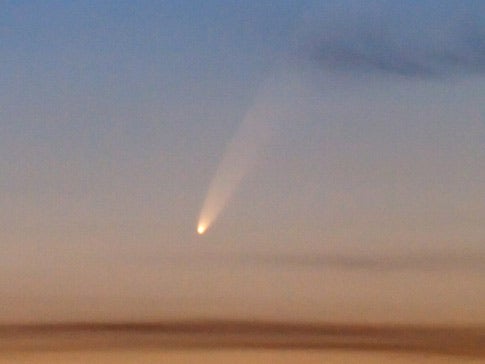On August 7, 2006, Australian comet-hunter Robert McNaught announced a potential new comet. He imaged it from his observatory in New South Wales. Officially dubbed C/2006 P1 (McNaught), the comet now hangs low in the western evening sky after sunset.
On Monday night, January 8, at 5 P.M. local time, Comet McNaught sits 8° above the southwestern horizon. Tuesday through Friday, the comet’s elevation at 5 P.M. measures 7°, 7°, 6°, and 5°, respectively. For comparison, your closed fist held at arm’s length spans roughly 10°. After Saturday, January 13, it will lie too close to the Sun to be visible.
Reports from the weekend indicated that Comet McNaught glowed between magnitudes –1 and –1.5, or between the brightnesses of Saturn at its maximum and Sirius, the brightest nighttime star. But how bright it was gets little attention. The real question is, “How bright will it get?” Some astronomers predict Comet McNaught will outshine Venus (magnitude –4.4). Others think it may reach a lofty magnitude –9. If it does, it will appear more than 60 times as bright as Venus.
Comets, however, are notorious for their surprises. Some comets outperform predictions, while others lag far behind. Comet McNaught already has surpassed astronomers’ minimum estimates, but it has a way to go before it reaches the highest expectations of comet observers.
To increase your chances of spotting the comet, start observing along the southwestern horizon 15 minutes after sunset. Use binoculars if you have them. If you spot a bright object, watch it as long as you can. The comet sets about an hour after sunset Monday and Tuesday, and sooner Wednesday through Friday. Don’t confuse the comet with Venus, which sets around 6 P.M. local time.
Comet McNaught reaches perihelion, its closest approach to the Sun, January 12. At that time, it will lie 15.8 million miles (25.4 million kilometers) from the Sun.










